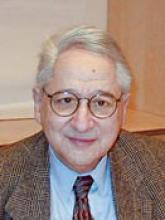When first I heard about the phenomenon in Le Roy, N.Y., in which several adolescent girls were mysteriously struck by symptoms reminiscent of Tourette’s, I immediately thought: I think I know how to get rid of those symptoms.
According to reports about the case in the New York Times and on NBC’s Today show, the first girl – a high school cheerleader who was a senior – woke up from a nap one day to find that her chin was jutting forward and her face was contracting into spasms. A few weeks later, her best friend and a captain of one of school’s cheerleading squads, also woke from a nap "stuttering and then later twitching, her arms flailing and head jerking," according to the Times. Two weeks later, another senior at the school experienced tics, and "arm swings and hums." The contagion continued until at least 18 girls at the school were struck by these symptoms in some way. At least one boy has been affected, according to reports.
The medical details about these cases are not known because of HIPAA rules. But media reports suggest that medical evaluations were properly done and ruled out many possible physical causes of these movement disorders from infectious to environmental, neurological, medication side effects to poisonings, or even a genetic predisposition.
After the ruling out process, the general expert consensus appears to be that the students experienced conversion disorder. Conversion disorder, which is in the DSM-IV under somatoform disorders, refers to a cluster of symptoms affecting voluntary or sensory functions that cannot be explained by a medical or neurological disorder. A DSM-5 Task Force has proposed renaming the disorder "functional neurological symptom disorder," a proposal about which I am ambivalent.
Conversion Disorder in the Literature
The term conversion disorder originates from the description made by Breuer and Freud of "pseudoneurological symptoms resulting from conversion of an unconscious psychological conflict to somatic representation" (Am. J. Psychiatry 2006;163:1510-7). Historically, words used to describe this phenomenon have included "hysterical" and "psychogenic."
Treatment of conversion disorder is not based on understanding the underlying pathophysiology. Treatment options can include psychotherapy, pharmacotherapy, transcranial magnetic stimulation, and hypnosis. The option that has worked best for patients I’ve treated with this disorder is hypnosis, which has been advocated for this condition since the time of Charcot, Janet, and Freud. A randomized, controlled trial of 45 inpatients aged 18-65 years with conversion disorder of the motor type or somatization disorder with motor conversion symptoms found that hypnosis aimed at symptom reduction brought clinically significant treatment results (Psychother. Psychosom. 2002;71:66-76).
In my work with patients, I would propose two 1.5-hour visits that family members were welcome to attend if the patient wished. After taking a history and explaining that although I may not be able to identify the cause of the movement disorder, I can offer them a treatment plan. Then I would teach them a simple hypnotic induction strategy based on my modifications to the Hypnotic Induction Profile developed by Dr. Herbert Spiegel and Dr. David Spiegel. Teaching this technique in addition to measuring hypnotizability takes no more than a half-hour.
The process also involves the patient being comfortable with the technique so she can use it on her own, once a strategy is taught and integrated into the program.
With a comfort zone being established for the patient using hypnosis, I would teach a strategy that has the patient visualize a large movie screen while in her own hypnotic state. Subsequently, she would be instructed to put a thick line down the center of the screen and focus on the left side only. When these concepts were fixed in place, the next step would be to get her to visualize herself on the screen with the movement or tic problem she was having.
During my experiences using these techniques, the movements or tics would stop or considerably slow down while in the hypnotic state. Reemergence of the movements either slowed or did not reoccur as we moved through the entire process.
Following the projection of the movements on the left side of the screen I would then have the patient focus on the blank right side of this visualized movie screen and allow her to imagine any pleasant scene she wished. During the office visit, I would have her practice this technique numerous times, allowing her to make modifications that made this approach work better for them. The whole idea leads to a self-help, empowerment approach to problem resolution.


